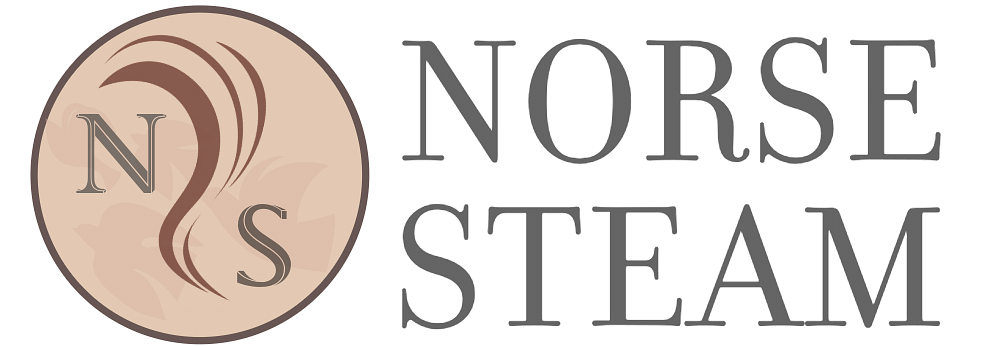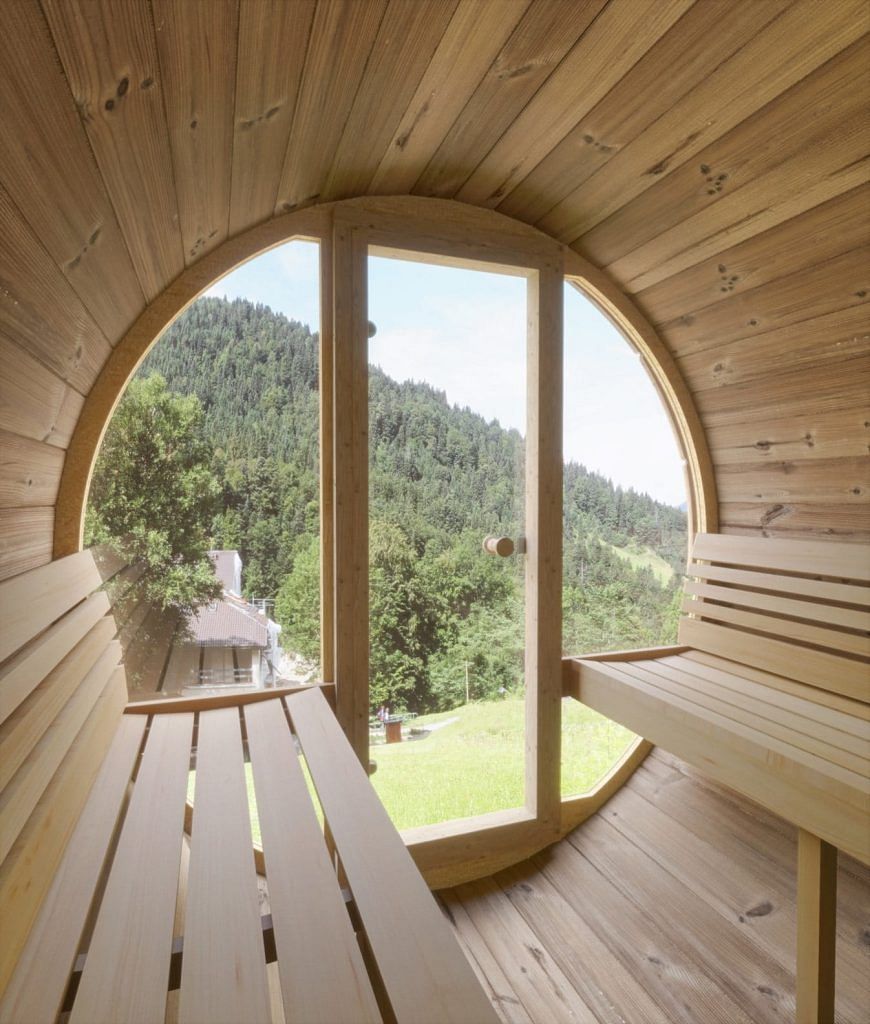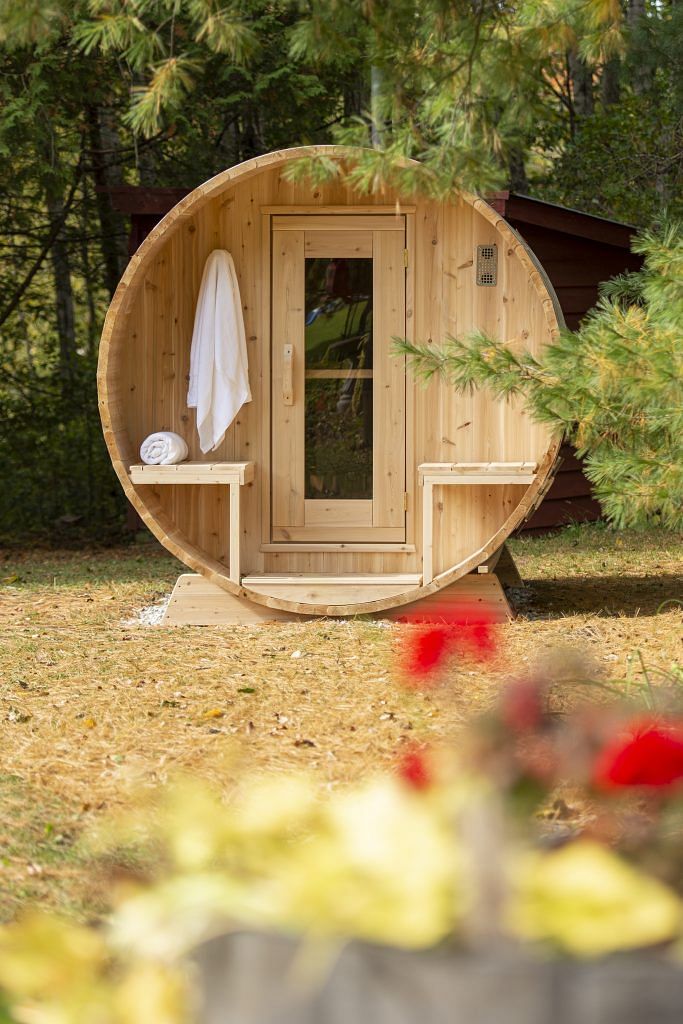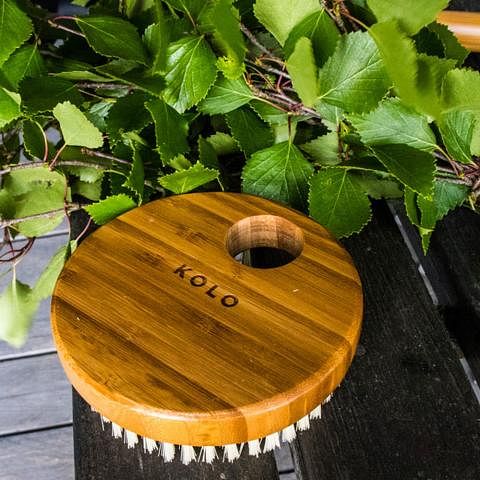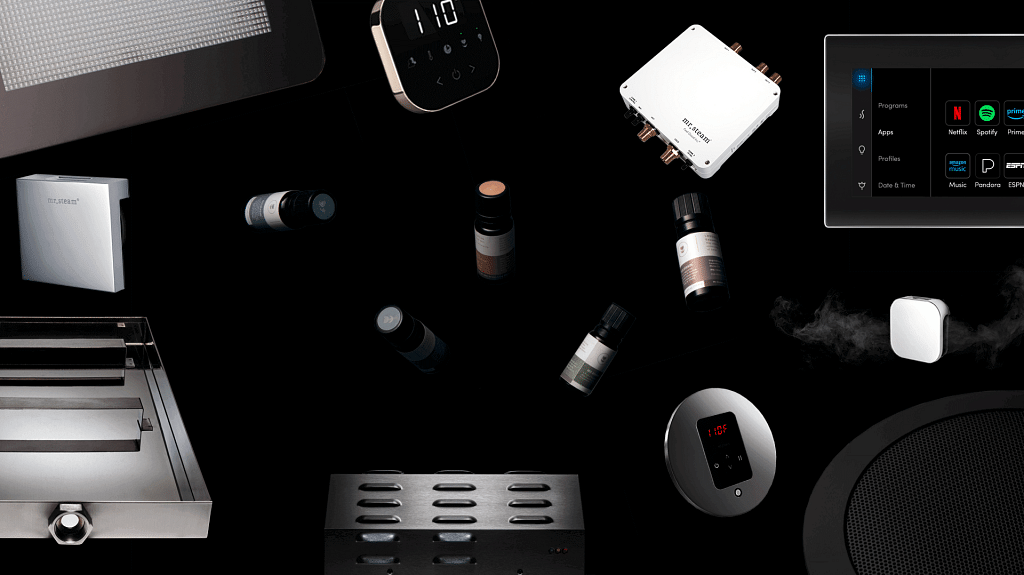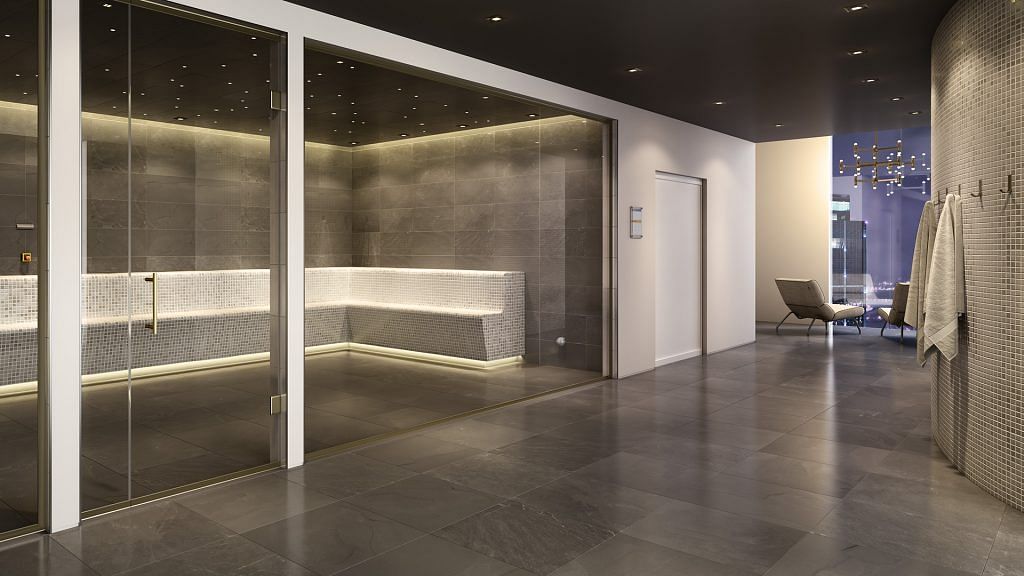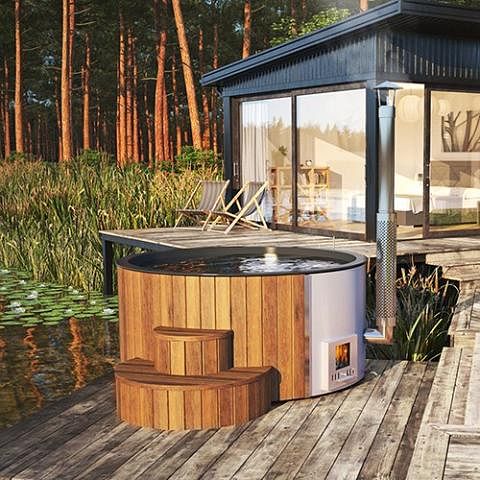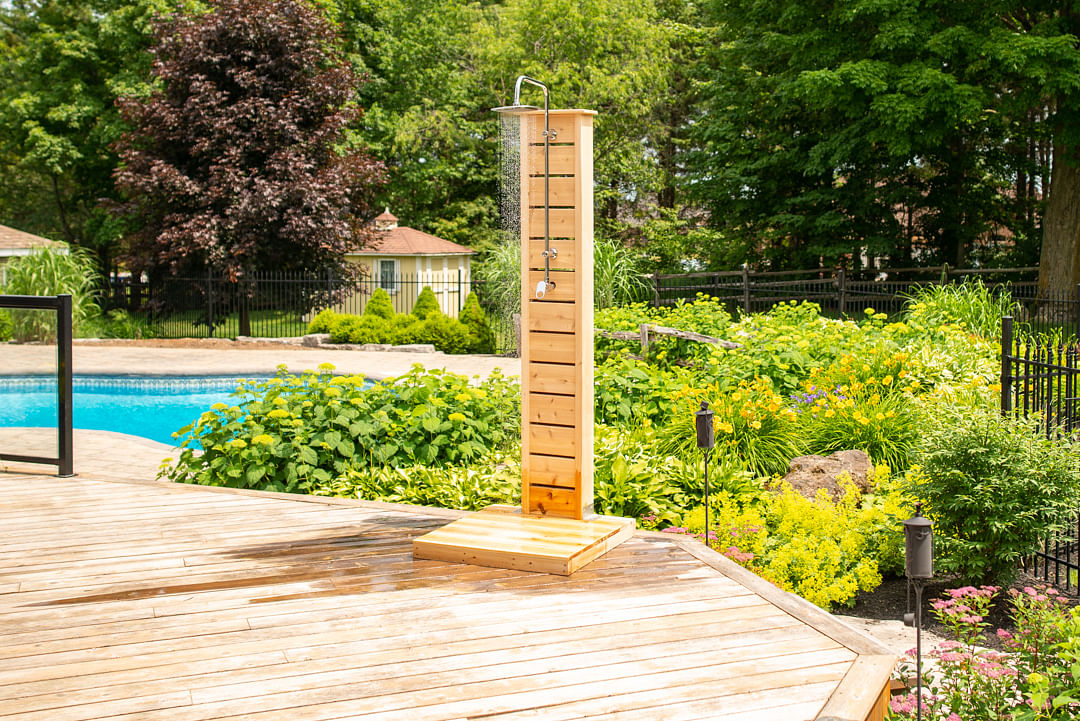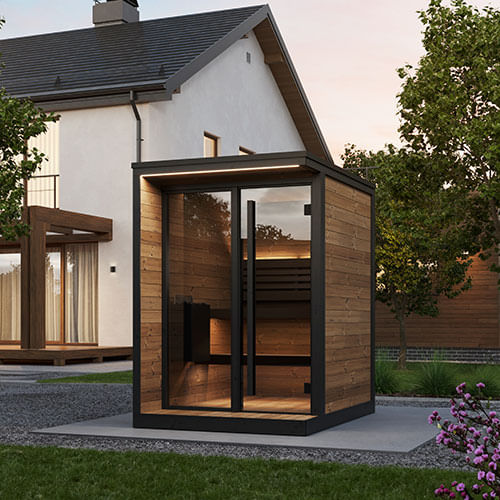Sauna
How Much Does an Infrared Sauna Cost? Complete 2025 Price Guide
Infrared saunas cost $2,000 for a compact, single-person unit to well over $18,000 for a luxury, family-sized setup. Mid-range two-person models often cost between $4,500 and $7,000. At the same time, premium designs with high-quality wood, advanced heating panels, and extras like chromotherapy lighting or integrated sound systems can climb into five figures.
Beyond the upfront price, it’s important to consider ongoing expenses such as installation, electricity, and maintenance as they all impact your total cost of ownership. Also, you need to consider how you plan to use the sauna, the space you have available, and whether the features justify the cost.
In this guide, we’ll break down typical prices, hidden costs, and key factors to help you choose the best infrared sauna for your needs.
Average Infrared Sauna Prices by Type
Here are the major types of infrared saunas and their prices:
1. Indoor Infrared Saunas:
Indoor infrared saunas are the most common choice for homeowners who want a permanent, spa-like experience in the comfort of their own home. They’re designed to blend into existing space, such as a spare room, basement, or dedicated wellness area, and offer more features, more comfort, and better heat distribution than portable options.
There are different types of saunas in this category, too.
Single-person infrared saunas are the most compact and start at around $2,000 to $3,500. These compact units fit in bedrooms, home offices, or dedicated wellness rooms. I often recommend them to customers with limited space who still want the complete sauna experience.
For example, the Finnmark Designs FD-1 Full Spectrum Infrared Sauna represents excellent value with full-spectrum technology, red light therapy, and Western Canadian cedar construction. This unit includes Bluetooth audio, LCD touchscreen controls, and NASA-tested low EMF technology.

Mid-range options like premium Golden Designs models ($4,000-$6,000) include advanced materials, digital controls, and chromotherapy lighting that transforms the experience. These saunas feature Canadian hemlock construction with low EMF carbon panels and integrated audio systems.

Golden Designs 4-Person Full Spectrum EMF FAR Infrared Sauna with Himalayan Salt Bar
You’ll also find advanced features such as low-EMF carbon panels, digital controls, mood lighting, and built-in sound systems.
2. Full-spectrum infrared saunas
Full-spectrum infrared saunas combine near, mid, and far-infrared wavelengths for comprehensive therapeutic benefits. Think of it like getting three different types of heat therapy in one unit – each wavelength penetrates your body at various depths for maximum wellness impact.

Finnmark Designs FD-3 Full Spectrum Infrared Sauna
Here’s why this matters:
- Near-infrared (700-1,000 nm) penetrates the skin surface for cellular healing,
- Mid-infrared (1,000-4,000 nm) reaches deeper into soft tissue for improved circulation,
- Far-infrared (4,000-1,000,000 nm) penetrates deepest for detoxification and muscle relaxation.
It’s like having a dermatologist, massage therapist, and detox specialist working together. Understanding the differences between heating technologies is crucial for making an informed decision. Learn more about infrared vs traditional saunas to determine which option best suits your wellness goals and space requirements.
This sauna comes in varying sizes, too. You’ll find entry-level models, for instance, the Golden Designs Dynamic full spectrum sauna that costs $3300 and Finnmark FD infrared saunas that start at $4,695. These sauna models provide excellent value with Canadian hemlock construction, full-spectrum carbon/ceramic heating elements, and chromotherapy lighting. These provide excellent value for those wanting advanced infrared technology without premium features.
High-end models like the Finnmark FD-5 4-person infrared and traditional steam sauna cost over $8000 but come with premium features such as a built-in audio system, tempered glass for heat retention, proprietary technology to speed up heating times, etc.

3. Low EMF infrared sauna
Low EMF infrared saunas address health-conscious users’ concerns about electromagnetic field exposure while maintaining therapeutic infrared benefits. EMF levels in these saunas measure below 3 milligauss, compared to standard models that can reach 10-20 milligauss or higher.
For example, the Golden Designs Dynamic “Barcelona” 1-2 person low EMF far infrared design costs $1999 and comes with EMF between 6 and 10 milligauss. The ideal temperature range is between 118F – 132F, but can go up to 140F if you need it to:

4. Near-Zero EMF infrared saunas
Near-zero EMF infrared saunas represent the highest standard in low electromagnetic field (EMF) safety. These saunas typically measure under one milligauss (mG) during operation — a level so low it’s close to what you’d find in nature. Achieving this requires specialized shielding, precise wiring layouts, and premium-grade components, which is why these units are usually priced higher than standard infrared models.
For perspective, common household items produce far higher EMF levels:
- Microwaves: 100–500 mG
- Hair dryers: 60–20,000 mG
- Cell phones: 10–100 mG
By contrast, near-zero EMF saunas bring exposure down to background environmental levels — similar to standing outside in a natural setting. For people who are sensitive to EMF or simply want the most advanced safety technology available, these saunas virtually eliminate electromagnetic concerns while still delivering the full therapeutic benefits of infrared heat.
Now…what influences the actual price of an infrared sauna? Let’s find out.
Factors That Affect Infrared Sauna Cost
1. Size and Capacity
The relationship between size and price in infrared saunas isn’t as straightforward as most people expect. Many assume that a smaller sauna should cost much less, but that’s not always the case.
For example, single-person saunas use fewer materials overall, but still require the same core components — heating elements, control systems, electrical wiring — as larger models. Because these fixed costs don’t shrink with size, the cost per person is often highest for single-user units. Smaller spaces also demand more precise engineering to ensure even heat distribution, which can add to the price.
Take for insurance, the Finnmark Design FD-2 full spectrum infrared sauna. This model prices above $5000, yet can only accommodate two people at a time:

Two- to four-person saunas tend to offer the best value in terms of cost per person, which is why they’re the most popular among my customers. They share the same electrical and structural systems across multiple seats, spreading the cost out while still providing comfortable spacing.
When you get into five-person or larger saunas, the total price increases due to more materials, higher power requirements, and added structural complexity. While the per-person cost may be lower, premium build considerations—such as reinforced flooring, upgraded heating systems, and advanced insulation—can offset those savings.
2. Type of Infrared Technology
The kind of infrared technology your sauna uses is one of the biggest drivers of cost. Each type has different benefits, complexity levels, and price ranges.
Here are the main types:
-
Far Infrared Technology
Far infrared is the most common and cost-effective option. It uses carbon or ceramic heaters and delivers heat at wavelengths that penetrate deep into the body’s tissues, promoting relaxation, circulation, and detoxification. Because this technology has been around for decades, it’s reliable, widely available, and affordable. This makes it the go-to choice for budget-conscious buyers.
-
Full-Spectrum Infrared
Full-spectrum saunas combine near, mid, and far infrared wavelengths in one unit, aiming to deliver the complete range of infrared benefits, that is, cellular regeneration, muscle recovery, detoxification, and skin health. Achieving this requires complex heater engineering and precise wavelength coordination, which pushes up manufacturing costs.
-
Near Infrared
Near infrared uses LED panels or specially designed incandescent bulbs to deliver shorter wavelengths that target the skin’s surface and stimulate cellular repair.
While it doesn’t penetrate as deeply as far infrared, it’s valued for improving skin tone, reducing inflammation, and supporting wound healing. It’s generally more expensive than basic far infrared due to the specialized light therapy components, but still more affordable than full-spectrum. Many of my clients in the wellness and beauty space opt for near-infrared units for their skin-rejuvenating benefits.
3. Build Materials and Quality
The materials used in an infrared sauna and how it’s built can influence both upfront cost and long-term value. They also determine how strong the sauna would be, comfort levels, and overall user experience.
Let me explain why:
1. Wood Selection
The type of wood affects insulation, maintenance needs, and lifespan. Here are the main types used for infrared saunas:
-
Hemlock – This is the baseline choice for many saunas. It’s light in color, stable, and offers good insulating properties at an affordable price. Most indoor budget-friendly saunas use hemlock, but it’s not naturally weather-resistant, so outdoor installations require extra sealing or protection.
-
Cedar – Expect to pay $1,000–$3,000 more for cedar, and good reason. It naturally resists moisture, pests, and rot, making it ideal for both indoor and outdoor use. Western Red Cedar is the gold standard for longevity and aroma, while Eastern White Cedar offers similar aesthetics with moderate weather resistance at a slightly lower cost. Beyond durability, cedar’s aromatic oils enhance the sauna experience, adding a subtle aromatherapy effect.
-
Thermally Modified Wood – This high-end option commands a $2,000–$5,000 premium. The heat-treatment process changes the wood’s cellular structure, making it more stable and moisture-resistant than untreated lumber. It’s perfect for extreme climates or commercial settings where constant use can strain standard wood. Most premium infrared saunas are made from thermo-treated wood.
2. Construction Quality
The construction quality of the sauna matters just as much. In fact, a sauna with premium wood but poor construction can underperform and wear out quickly. This is why you need to pay attention to it as well.
Technically, budget models often cut costs with basic fasteners, thin insulation, and minimal quality control. These savings can backfire, leading to drafts, heat loss, and structural issues that shorten the sauna’s lifespan.
On the other hand, premium construction uses stainless steel hardware to prevent rust, high-grade insulation for better energy efficiency, and rigorous quality checks to ensure every joint and panel fits perfectly. Extended warranties are also common with higher-end builds, offering peace of mind that the investment will last.
Over time, these quality differences directly affect ownership costs. A well-built sauna might cost more upfront, but can save thousands in repairs, replacements, and energy bills.dssssssss
4. Features and Accessories
Once you’ve chosen your sauna’s build quality and heating technology, the next layer of decision-making is features and accessories. These can dramatically shape not only your day-to-day experience but also the therapeutic value you get from each session.
Think of this like buying a car: the engine and frame get you moving, but it’s the comfort features (think heated seats, sound system, sunroof) that turn driving into a pleasure. In the same way, sauna accessories range from simple comforts to specialized wellness upgrades.
Here are some common accessories prioritized by our buyers:
-
LED Color Therapy (Chromotherapy)
Chromotherapy uses specific light wavelengths to influence mood and well-being. In its simplest form, a basic chromotherapy system cycles automatically through a small selection of preset colors, such as calming blues or energizing reds, during your sauna session.
Higher-end systems offer more control, letting you adjust brightness, change color sequences, and fine-tune the duration to create a completely personalized experience.
-
Red Light Therapy Integration
Red light therapy, when paired with infrared heat, amplifies benefits for skin health, muscle recovery, and cellular regeneration. While entry-level systems use small LED panels, professional-grade installations cover a larger surface area and produce consistent therapeutic wavelengths. This feature is especially popular among athletes recovering from intense training cycles and customers looking to improve skin elasticity and reduce signs of aging.
-
Audio Systems and Digital Controls
Adding entertainment and smarter controls can turn a sauna session into a full sensory experience. For example, Bluetooth-enabled speakers let you stream relaxing music, guided meditations, or even podcasts. There are also models with touchscreen panels and app integration that make it easy to adjust temperature, lighting, and session duration without interrupting your relaxation.
5. Brand and Model Reputation
The brand you choose plays a major role in both the upfront cost and the long-term value of your sauna. A strong reputation often comes from consistent build quality, innovative features, and reliable customer service—and those factors can make the higher price worthwhile.
Before making a decision, it’s important to do your due diligence and research each brand’s track record, warranty terms, and customer feedback.
Premium brands tend to offer superior materials, more advanced heating technology, and longer warranties, all of which can translate into fewer repairs, better performance, and a longer service life. While the purchase price may be higher, the savings on maintenance and the peace of mind from reliable support often offset the difference in the long run.
Examples of brands that check all quality boxes are:
- Dynamic Saunas ($3,000–$8,000) – Focuses on delivering reliable far-infrared performance at a lower cost.
- Golden Designs ($2,500–$7,000) – Offers entry-level saunas with essential features. While they won’t have all the bells and whistles, they work well for people who use their sauna occasionally.
- Maxxus ($4,000–$9,000) – Maxxus saunas are known for energy efficiency, spacious interiors, and solid construction. This makes them a smart choice for families or frequent users.
- Finnmark ($6,000–$12,000+) – A top-tier option for those seeking the very best in build quality, safety, and technology. Finnmark is renowned for its near-zero EMF heaters, precision engineering, and use of premium materials, making it a go-to choice for wellness enthusiasts who want the safest, most luxurious experience possible.
6. Installation and Setup Costs
When budgeting for your infrared sauna, it’s important to account for installation expenses, especially electrical work. Most full-size models require a dedicated 220V outlet for optimal performance, while some smaller, entry-level units can run on a standard 110V household outlet.
Hiring a licensed electrician typically costs between $300 and $2,000, depending on several factors:
- The distance from your electrical panel to the sauna location (longer runs require more wiring and labor),
- The need for panel upgrades in older homes with limited capacity,
- Local permit or inspection fees usually add another $100 to $300.
If your sauna will be outdoors, expect additional code requirements that can push electrical costs higher. You also need to consider installation costs. Some people always prefer DIY assembly, but I recommend professional installation to save time, reduce stress, and protect your warranty.
Technically, single-unit infrared saunas cost less to install, compared to advanced models with complex control systems or integrated accessories. Overall, choose models with straightforward installation so you can cut costs on installation fees. Before installation, it’s essential to understand your home’s electrical capacity and requirements. Our comprehensive guide on sauna electrical requirements covers everything you need to know about power needs, circuit specifications, and safety considerations for both electric and infrared models.
Conclusion: Is an Infrared Sauna Worth the Cost?
Yes, infrared saunas are worth the cost for most people who use them regularly and value long-term wellness. They deliver measurable benefits such as improved circulation, faster muscle recovery, stress reduction, and potential detoxification support. Many owners also experience better sleep, higher energy levels, and a greater sense of overall well-being.
For instance, this user on Reddit loves infrared saunas because they make them feel “happy and healthy”.

This one loves it because it doesn’t consume so much energy, yet delivers the best performance:

Ready to purchase your first unit? Check out our expert top picks here or schedule a free 30-minute consultation with our sauna experts for a personalized recommendation. To maximize your investment and ensure the best possible experience, discover our expert tips on how to prepare for infrared sauna sessions including pre-session preparation, optimal session duration, and post-sauna care routines.
Frequently Asked Questions
1. Is a full-spectrum infrared sauna more expensive?
Yes, full-spectrum infrared saunas cost more than far-infrared models due to advanced technology combining near, mid, and far infrared wavelengths. The sophisticated heater systems and control electronics required for coordinating multiple wavelengths justify premium pricing. However, the advanced therapeutic benefits often justify higher costs for customers prioritizing health outcomes over basic relaxation.
2. Do low EMF saunas cost more?
Yes, low EMF infrared saunas typically cost more than standard models, depending on the sauna’s size and the complexity of the shielding. This added cost comes from the extra materials and engineering needed to reduce electromagnetic field exposure without affecting the sauna’s heating performance.
3. What’s the cheapest way to get an infrared sauna?
One smart approach is opting for a compact 1–2-person low-EMF infrared sauna. For example, on our website, you’ll find models like the Golden Designs Maxxus “Seattle” Edition for $2,299, or the Golden Designs Maxxus with Hemlock for $2,695. These deliver great value all at the lower end of quality infrared sauna prices.
4. Are there financing or payment plan options?
Yes, retailers like Norse Steam offer payment plans to make it easier to bring an infrared sauna home without a large upfront payment. Through Affirm, you can divide the total cost into predictable monthly installments, with the flexibility to choose a repayment term that works for your budget.
This means you can start enjoying the health and relaxation benefits immediately rather than delaying your purchase while saving up. For many customers, this approach makes the investment feel far more manageable and allows them to prioritize their wellness without compromising other financial goals.
5. What is the best infrared sauna for beginners?
For newcomers to infrared therapy, a quality sauna blanket ($300-$500) or portable dome sauna ($400-$600) provides an excellent introduction without major investment. These options let you experience infrared benefits while determining if a full-sized sauna suits your lifestyle.
If you’re ready for a permanent installation, mid-tier 2-person models ($1,800-$2,500) offer the best balance of features and value. Look for established brands like Finnmark with good warranties and customer support to ensure a positive first experience with infrared therapy.
5. What is the difference between far infrared and full spectrum?
Far infrared saunas focus exclusively on longer wavelengths (3,000+ nanometers) that create deep tissue heating and promote detoxifying sweat. These models cost less and provide proven wellness benefits for most users.
Full-spectrum saunas, on the other hand, add near infrared (700-1,400nm) for skin health and mid infrared (1,400-3,000nm) for improved circulation. While more expensive, they offer broader therapeutic potential and more comprehensive wellness support.
6. How safe are low EMF infrared saunas?
Low EMF saunas reduce electromagnetic field exposure to levels well below safety guidelines established by health organizations. While research on long-term EMF exposure continues, current evidence suggests that properly shielded infrared saunas pose minimal health risks.
7. Can I install a sauna myself at home?
Most indoor infrared saunas arrive pre-fabricated and require only basic assembly using provided instructions. However, electrical connections often need professional installation, particularly for 220V models requiring dedicated circuits.
